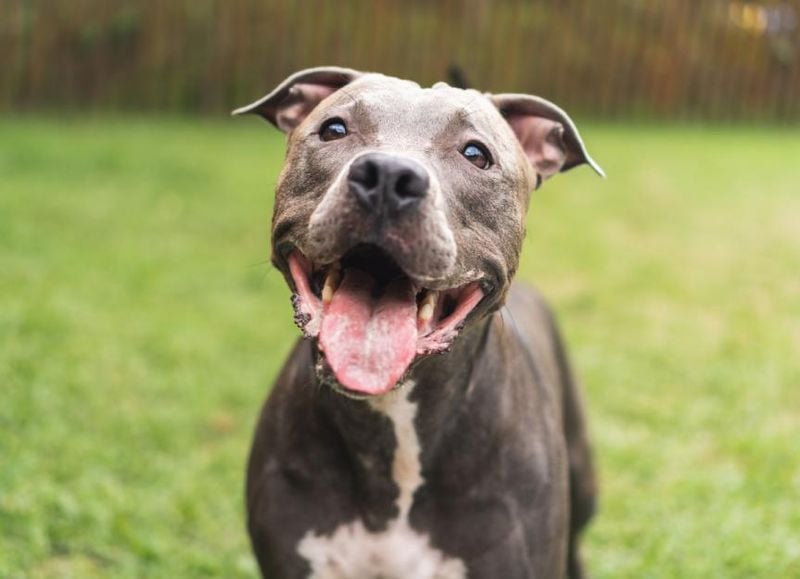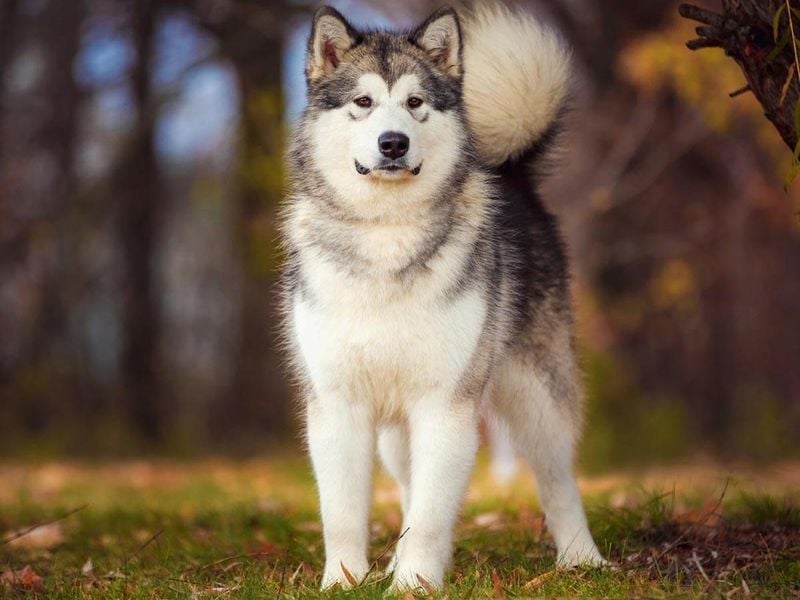12 Dog Breeds That Just Can’t Stand Cats
Dogs and cats living together—it’s the classic image of domestic bliss. But as many pet owners discover, harmony isn’t guaranteed. While some dogs and cats become the best of friends, others can’t seem to stay in the same room without a growl, a hiss, or a chase. The truth is, not all dogs are naturally inclined to get along with cats.
Certain breeds were developed with strong prey drives, territorial instincts, or a fiercely independent streak—traits that don’t always mesh well with a cat’s equally strong-willed personality. For example, dogs bred to hunt small animals may view a cat as a target, while high-energy herding breeds may try to chase or control their feline housemates.
Of course, every dog is unique, and proper socialization can make a big difference. But breed tendencies matter, especially if you’re bringing a new pet into a home with existing furry residents. Understanding which dogs are more likely to clash with cats can save you a lot of stress—and prevent fur from flying (literally).
Whether you’re a cat lover thinking about adding a dog to the mix, or a dog person wondering which breeds are better suited to cat-free homes, this guide is for you. Here are 12 dog breeds that typically don’t get along well with their feline counterparts.
1. Greyhound: Racing Instincts Run Deep
Bred for centuries to chase small, furry animals, Greyhounds possess one of the strongest prey drives in the canine world. When they spot a cat darting across the room, their instinct to pursue kicks into high gear. Those long legs can reach speeds of 45 mph in just a few strides!
While many retired racing Greyhounds can be taught to coexist with household cats through careful training, their natural impulse remains powerful. Owners must exercise extreme caution during introductions and never leave them unsupervised together.
Some Greyhounds with lower prey drives may eventually accept familiar cats, but strange cats in the yard will almost always trigger their chase response.
2. Siberian Husky: Born to Hunt in Packs
Stunning blue eyes might make Siberian Huskies look angelic, but their wolf-like ancestry gives them a strong predatory nature. Originally developed by the Chukchi people of Siberia, these dogs were bred to hunt in packs across vast snowy landscapes.
Their high energy levels and independent thinking make them challenging to train around small animals. A Husky’s prey drive often activates suddenly when a cat makes quick movements.
Many Husky owners report that even after years of seemingly peaceful coexistence, their dogs never fully suppress the urge to chase cats. Early socialization helps, but vigilance remains necessary throughout their lives.
3. American Pit Bull Terrier: Terrier Tenacity Issues
Despite their loyal and affectionate reputation with humans, American Pit Bull Terriers often struggle with cat relationships. Their terrier heritage gives them a stubborn determination once they’ve set their minds on something – unfortunately, sometimes that “something” is chasing the family cat.
Powerful jaws and athletic bodies make them formidable opponents for cats. The good news? Pit Bulls raised with cats from puppyhood often develop stronger tolerance.
Their high energy levels require proper outlets through exercise and play. Without adequate physical and mental stimulation, these dogs may direct their excess energy toward pestering feline housemates.
4. Jack Russell Terrier: Small Dog, Mighty Hunter
Don’t let their diminutive size fool you! Jack Russell Terriers were bred specifically to hunt foxes and other small animals. Their compact bodies contain boundless energy and determination that makes cats natural targets for their hunting instincts.
Lightning-quick reflexes allow them to dart after cats before owners can intervene. Their tenacious nature means they rarely give up once they’ve started a chase.
Jack Russells typically view cats as either prey or competition for attention. Even with extensive training, many Jack Russells maintain a lifelong enthusiasm for cat-chasing that requires constant management and supervision.
5. Weimaraner: The ‘Ghost Dog’ with Prey Problems
Nicknamed ‘the silver ghost’ for their distinctive gray coats, Weimaraners bring elegance and intensity to everything they do – including cat pursuit. Originally bred as hunting companions for German nobility, their aristocratic appearance belies a powerful prey drive.
Weimaraners form incredibly strong bonds with their human family members but often view cats as intruders to be eliminated. Their large size and exceptional speed make them particularly dangerous to cats during chase scenarios.
Separation anxiety commonly affects this breed, sometimes manifesting as aggression toward other pets. Careful management and extensive training from puppyhood offer the best chance for peaceful multi-pet households.
6. Doberman Pinscher: Guardian with Little Feline Patience
Regal and imposing, Doberman Pinschers were created to be the ultimate protection dogs. Their guarding instincts often translate to territorial behavior that leaves little room for cats in their domain.
Sharp intelligence makes Dobermans quick studies in training, but also means they’re experts at opening doors or finding ways to access areas where cats might hide. Their powerful bodies and athletic abilities give cats few escape options during confrontations.
Female Dobermans sometimes show more tolerance toward cats than males. While individual temperaments vary widely, most Doberman experts recommend choosing a different breed if cats are already established in your household.
7. Australian Cattle Dog: Herding Instinct Gone Wrong
Australian Cattle Dogs approach life with tireless work ethic and laser focus. Developed to control stubborn cattle in harsh Australian conditions, these dogs bring intensity to everything they do.
Their herding instincts often manifest as chasing, nipping, and controlling behaviors directed at cats. The blue or red heelers, as they’re commonly called, view moving objects as things to be controlled and corralled.
Extremely intelligent and sometimes manipulative, these dogs require consistent training and clear boundaries. Without proper guidance, their natural tendency to “manage” household movement can make life miserable for feline residents who just want to stretch their legs without being pursued.
8. Shiba Inu: Ancient Hunting Heritage
Behind that adorable fox-like face lies one of Japan’s oldest hunting breeds. Shiba Inus maintained their primitive hunting instincts through centuries of selective breeding, making them naturally suspicious of small, quick-moving animals like cats.
Fiercely independent, Shibas often refuse to follow commands when their prey drive activates. Their cat-like agility and lightning-fast reflexes mean they can match most felines move for move during pursuits.
The Shiba’s tendency toward resource guarding extends to territory, toys, and human attention – all things a cat might inadvertently challenge. While some Shibas raised with cats from puppyhood develop tolerance, their natural instincts typically remain strong throughout life.
9. Afghan Hound: Elegant Hunter with Stubborn Streak
Flowing locks and regal bearing make Afghan Hounds appear aloof and aristocratic. Don’t be fooled by their fashionable appearance – these ancient sighthounds were developed to hunt large game across rugged mountain terrain.
Their independent nature makes training challenging, especially when it comes to suppressing prey drive. Once an Afghan locks eyes on a moving cat, their single-minded focus often overrides years of training.
Surprisingly fast and agile despite their delicate appearance, Afghan Hounds can reach impressive speeds in pursuit of perceived prey. Their stubborn temperament means that even with extensive socialization, many never fully accept feline companions.
10. Alaskan Malamute: Pack Mentality Challenges
Powerful and wolf-like, Alaskan Malamutes were developed by the Mahlemut people for hauling heavy loads across Arctic terrain. Their strong pack mentality often translates poorly to multi-species households where cats typically rank low in their social hierarchy.
Malamutes possess remarkable strength and endurance, making physical barriers between them and cats essential safety features. Their thick double coats and substantial size give them advantages in any confrontation.
Deeply rooted predatory instincts make small animals natural targets. While some Malamutes can learn to tolerate specific cats they’ve been raised with, most maintain a strong prey drive toward unfamiliar felines throughout their lives.
11. Beagle: Nose-Driven Troublemakers

Charming and compact, Beagles might seem like perfect family pets, but their hunting heritage makes cat relationships complicated. Developed to track rabbits and hares, their extraordinary sense of smell keeps them constantly aware of the cat’s location.
Beagles follow their noses with legendary determination, often ignoring commands when on a scent trail. Their cheerful howling when tracking can stress cats to their breaking point.
Food motivation runs extremely high in this breed, leading to conflicts over cat food or treats. While many Beagles eventually form truces with household cats, their hunting instincts remain active – making outdoor cats particular targets for unwanted pursuit.
12. Manchester Terrier: Rat Catcher with Cat Problems
Sleek and athletic, Manchester Terriers were the premier rat-catching dogs of 19th century England. Their lightning-fast reflexes and determination made them ideal for controlling vermin in factories and homes.
Unfortunately for cats, the Manchester’s prey drive doesn’t distinguish between rats and felines. Their intensity while pursuing moving objects makes them challenging companions for cat-inclusive households.
Sharp intelligence allows them to learn commands quickly, but their terrier stubbornness means they often choose when to obey. Manchester Terriers typically maintain high energy levels well into adulthood, requiring consistent exercise to prevent destructive behaviors that might be directed toward resident cats.

















